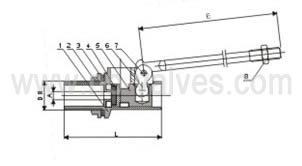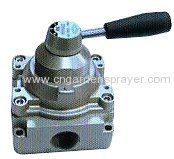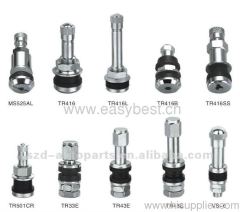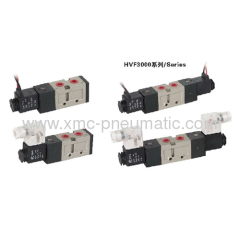.gif)
|
Ningbo Oubang International Trade Co., Ltd.
|
Water Level Control Valve
| Payment Terms: | T/T |
| Place of Origin: | Zhejiang, China (Mainland) |
|
|
|
| Add to My Favorites | |
| HiSupplier Escrow |
Product Detail
float valve is a mechanical feedback mechanism that regulates is an example of negative feedback and of proportional control.
float valve is a mechanical feedback mechanism that regulates fluid level by using a float to drive an inlet valve so that a higher fluid level will force the valve closed while a lower fluid level will force the valve open. This is an example of negative feedback and of proportional control.
The most common use of a float valve is to control the filling of water in the water tank (cistern) of a toilet. Other common uses include refrigerator as well as aquarium auto top-off systems.
This is done by utilizing a balloon type float valve. Its working is thus:
A ball shaped hollow sphere , made of hardened rubber or copper alloy sheet is sealed so that water cannot enter it. This is attached to an arm that in turn is attached to the valve or flap.
The valve or flap controls the opening of the pipe through which water flows into the tank/cistern
Under empty condition, valve is fully open and balloon is suspended freely.
As water ingresses into the container, the balloon, on account of trapped air and buoyancy, begins to rise / float on the water surface.
Soon the balloon floats high enough so that the arm attached to the balloon closes the valve and stops water from flowing in.
Thus when water is filled to a certain level, its inflow is stopped by this arrangement.
| NO. | NAME | MATERICAL |
| 1. | Body | BRASS |
| 2. | Rubber gaaket | NBR |
| 3. | Nut | BRASS |
| 4. | Rubber gaaket | NBR |
| 5. | Cartridgetor valve | BRASS |
| 6. | Lever | BRASS |
| 7. | Peg | BRASS |
| 8. | Plastic Cover | ABS |
| 9. | Nut | BRASS |
| DN | A(mm) | L(mm) | E(mm) |
| 1/2" | 6 | 70 | 250 |
| 3/4" | 10 | 77.5 | 285 |
| 1" | 10 | 87 | 310 |
| 1-1/4" | 12.5 | 94 | 310 |
| 1-1/2" | 14.5 | 131 | 525 |
| 2" | 15 | 138.5 | 525 |

Didn't find what you're looking for?
Post Buying Lead or contact
HiSupplier Customer Service Center
for help!
Related Search
Water Level Valve
Water Control Valve
Water Level Sensor
Water Level Switch
Water Level Gauge
Water Level Indicator
More>>

.jpg)




.jpg)
.jpg)
.jpg)
.jpg)
.jpg)
